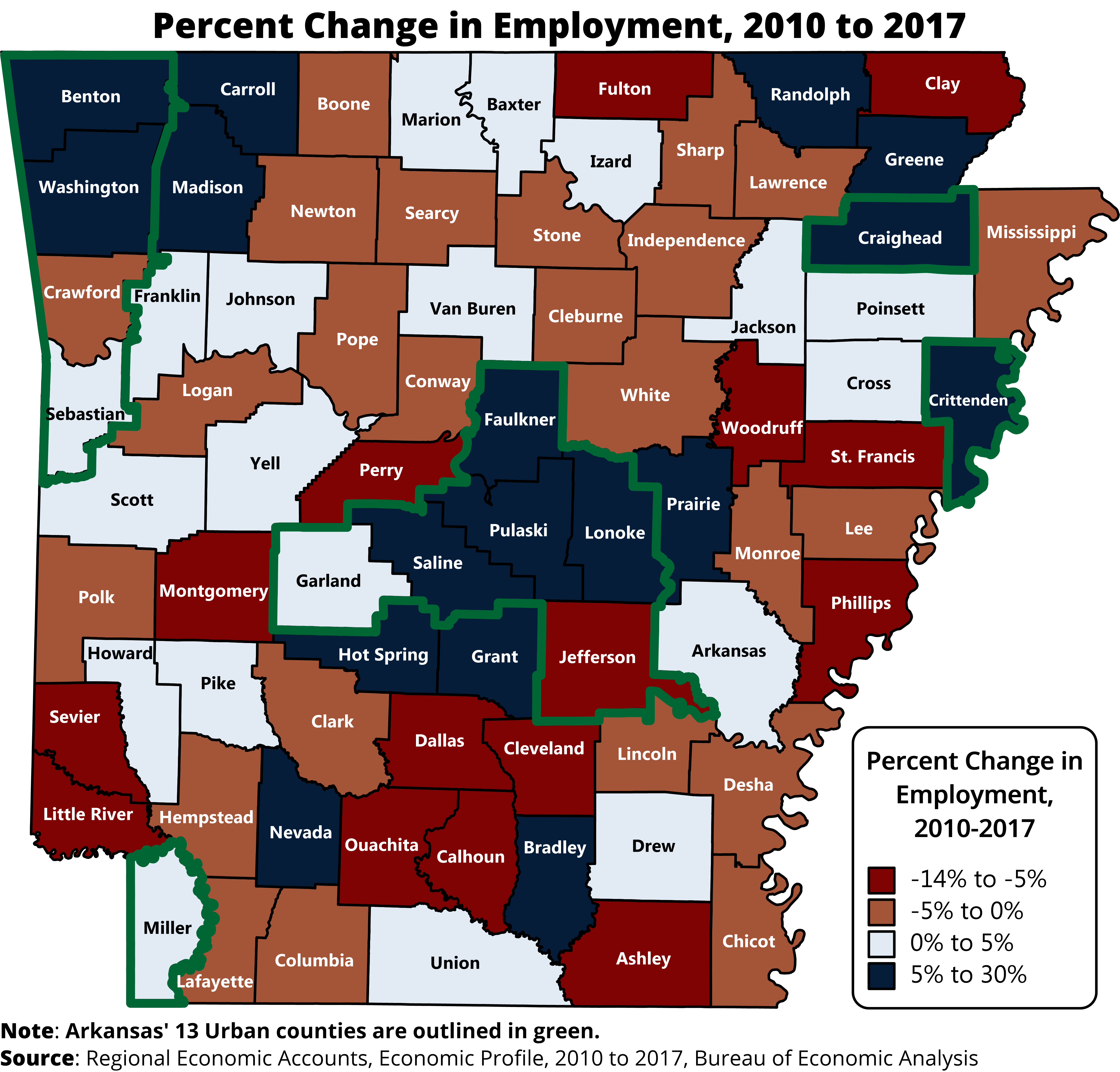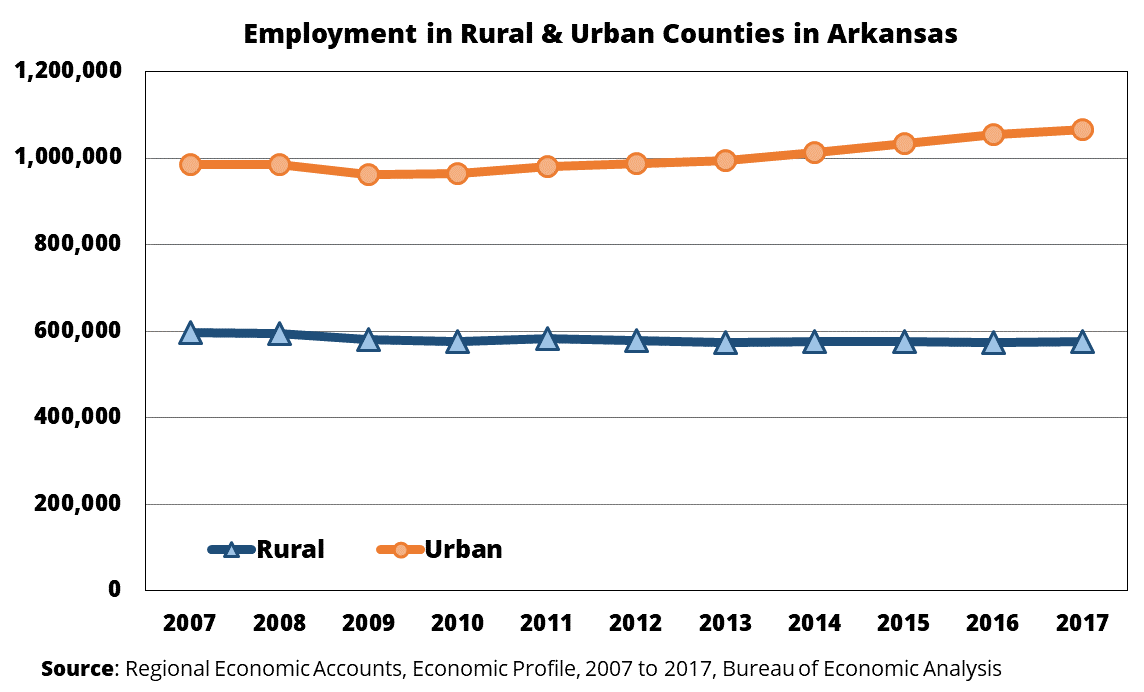Posts

Employment in Rural Areas of Arkansas Declining with Fewer Manufacturing and Natural Resource Jobs
Since the end of the Great Recession in 2010, both the Arkansas and national economies have grown. However, the economies of many rural areas in the state continue to decline. Even the economies of rural areas of the state that have grown since 2010, most have not returned to pre-recession levels.
Many rural areas in Arkansas, similar to rural areas across the United States, are losing businesses, employment opportunities and population. In addition to the economic decline, rural areas of the state also suffer from lack of infrastructure and services. This results in a higher share of people who live in poverty and rely more heavily on social services.
The 2019 Rural Profile of Arkansas, which can be accessed at www.uaex.uada.edu/ruralprofile, highlights some of the major demographic, social and economic differences between rural and urban areas of the state.
We will highlight some of these differences in multiple blog posts. We begin with a look at the decline in employment in rural areas of the state.
While the Arkansas’ economy, as measured by total employment, has grown steadily since the end of the Great Recession in 2010, the 6.5% growth between 2010 and 2017 was less than half the national growth, which was 13.7%.
Although the state saw an increase in the number of jobs since the end of the Great
Recession, many rural counties continue to lose jobs or are adding only a few jobs.
Sixty percent of the rural counties in the state lost jobs since the end of the Great
Recession in 2010 (see map) and 50 of 62 rural counties (80%) had fewer jobs in 2017
compared to the pre-recession levels in
2007.
Overall, the rural counties have slightly fewer jobs in 2017 than
they had in 2010, and nearly 4% fewer jobs than in 2007.
There are many factors driving this trend in declining employment in rural counties. Part of the decline is related to a continuing shift from manufacturing to service sector jobs, which disproportionately affects rural areas.
Rural areas of the state lost approximately 7,000 manufacturing jobs between 2007 and 2016. Rural areas of the state have a larger share of their jobs in manufacturing businesses compared to urban areas, and thus are greatly affected when the manufacturers leave or downsize. In 2016, 14% of the jobs in rural Arkansas counties were in the manufacturing sector compared to only about 7.5% in the urban counties.
While many manufacturing jobs left the state in the past two decades, the manufacturing business that remain and the new manufacturing jobs being created often require greater skills to operate the automated technology. In general, rural areas have fewer skilled workers, and are thus less likely to attract or create new manufacturing jobs.
While there has been a small increase in the number of service jobs in rural areas since the end of the Great Recession, there is a limit to this growth without an increase in the basic export industries.
Rural counties have also lost farm, forestry and mining jobs since 2010. These are basic exporting industries that bring dollars into the county and create tertiary jobs, which support these industries.
Generalizing about rural counties, however, misses the success stories of some rural counties that have made a sustained effort to grow their economies. Several counties in northeast Arkansas have benefited from growth in their steel and railcar industries. Several counties have benefited by adding value to agriculture and forest commodities. Other counties have increased employment opportunities by helping their businesses sell products and services to the Federal and State governments. Some rural counties are attracting more tourists and retirees to grow their local economies.
For more information about employment trends in Arkansas, see the 2019 Rural Profile of Arkansas. For assistance in identifying opportunities and implement strategies to grow your regional economy, contact your county extension agent or our Community & Economic Development program.

